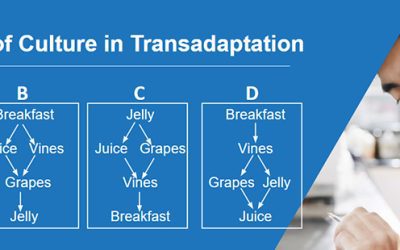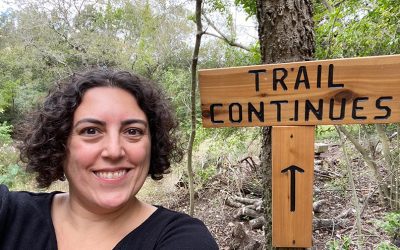Blog
Stay up-to-date on the latest Higher Education, K-12 and Curriculum Design content.
Recent Blogs
Developing Leadership: 5 Ways Colleges Can Cultivate Leaders for Higher Ed
Like all successful organizations, higher education institutions need good leaders. Not just now, but in the future. However, leadership roles are not the same as they were in the past, and future leaders must prepare for ongoing changes. Therefore, colleges and universities need to cultivate leaders for the higher education field. And they can do so amid their current administrators, faculty, and academic staff. Here are five ways colleges and universities can cultivate leaders.
2021: The 6 Best A Pass Translation Articles for the Year
Publishers and providers of K-12 and higher education institutions must to stay up-to-date on industry trends and forecasts. This knowledge helps them remain competitive and meet the evolving needs of a global audience of colleges, districts, teachers, and students. The A Pass blog strives to keep leaders and decision-makers informed on essential topics, including how to translate educational materials. Here are the top six translation articles from our blog for 2021.
Student-Centered Learning: What Elements Should Publishers Address?
Student-centered learning puts the student in control of what and how they will learn and why they want to learn it. This approach is different from conventional teaching when the instructor drives the content and pace of the educational material. Benefits to this model include increased student engagement and teacher collaboration to produce positive student outcomes and encourage lifelong learners. To further define the student-centered model, consider these four design elements K-12 publishers can employ to support student-centered learning.
6 Principles for Human-Centered Leadership for Higher Ed
At least 70% of an employee’s time is engaged by their supervisors. Therefore, leaders can make or break the atmosphere of the workplace. Human-centered leadership applies to higher ed leaders as well as staff and students. We will define human-centered leadership and provide six principles provosts and other higher ed leaders can utilize for effective leadership.
Reflections of 2021 CBExchange by Pauline Valvo
Pauline Valvo, Vice President of Business Development of A Pass Educational Group, LLC, attended the CBExchange. CBE, the Competency-Based Network, which produces the CBExchange, is a group of regionally, 2-year, and 4-year colleges and universities who work together for competency-based education.
Digital Publishing Platforms: 4 Points Providers Should Know
Digital publishing for K-12 schools and colleges is here to stay. With the benefits of remote and self-paced learning at the forefront, students, teachers, and schools are turning to digital educational material over traditional print material. Publishers who make the transition to digital can remain competitive. Providers can employ these methods when utilizing digital publishing platforms:
Chat and Converse with Pauline Valvo at CBExchange
Pauline Valvo, Vice President of Business Development of A Pass Educational Group, LLC, is attending the CBExchange. CBE, the Competency-Based Network, which produces the CBExchange, is a group of regionally, 2-year, and 4-year colleges and universities who work together for competency-based education.
Chatbots: K-12 Providers and College Leaders Can Utilize These 5 Features
Artificial intelligence (AI) positively impacts K-12 and college higher-ed institutions across the US, especially with chatbots. Chatbots are AI-powered robots that are programmed to interact with humans conversationally. They answer questions, give feedback, and provide reminders in a way that increases engagement and is available around the clock. LMS designers and CIOs can use the following five features of chatbots to benefit K-12 and higher-ed.
AR and XR: 6 Methods College Leaders Can Employ to Improve the Student Experience
Extended reality (XR) and augmented reality (AR) are disrupting education. XR tech immerses students into a virtual environment. Therefore, imagine biology students dissecting lab specimens in their home office. AR improves a student’s environment with tech enhancements. Picture history students viewing ancient ruins on a busy, street corner on a field trip. College leaders can attract students, cut costs, compete and survive with these tools.
Announcing our new Vice President of Finance and Administration, Nikki Giovanni Huff
A Pass is proud and happy to announce our new Vice President of Finance and Administration, Nikki Giovanni Huff. In 2017, Nikki Giovanni started working with A Pass as a freelance higher education writer serving in the copy editor, developmental editor, managerial...
Digital Textbooks: 4 Elements Senior Design Directors Should Consider
Many school administrators are making the shift or have shifted to digital textbooks. After all, they are more cost-effective, are interactive, use familiar navigation tools, and allow real-time updates. Consequently, the demand for high-quality digital textbooks is growing. Senior design directors should consider the following elements for building and designing digital textbooks.
The Digital Campus: 6 Points to Know for Directors of Online Learning
What is the digital campus? Why would leaders push their institutions in this direction? The benefits can be rewarding for directors of online learning. Still, the barriers can distract leaders, moving the digital campus to the back burner. This decision can harm the institution down the road. Below are 6 points directors need to know to create a vibrant digital campus.












